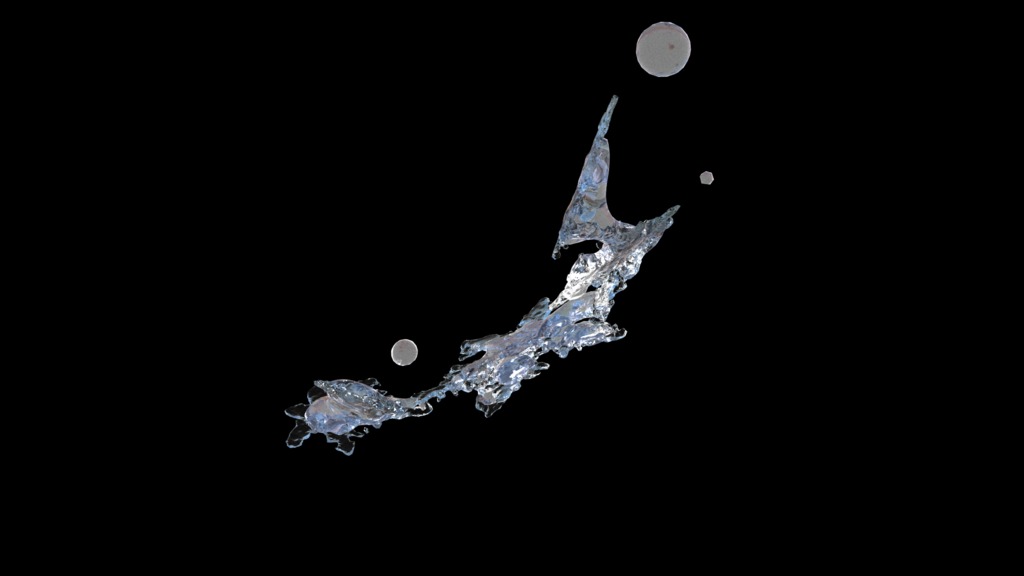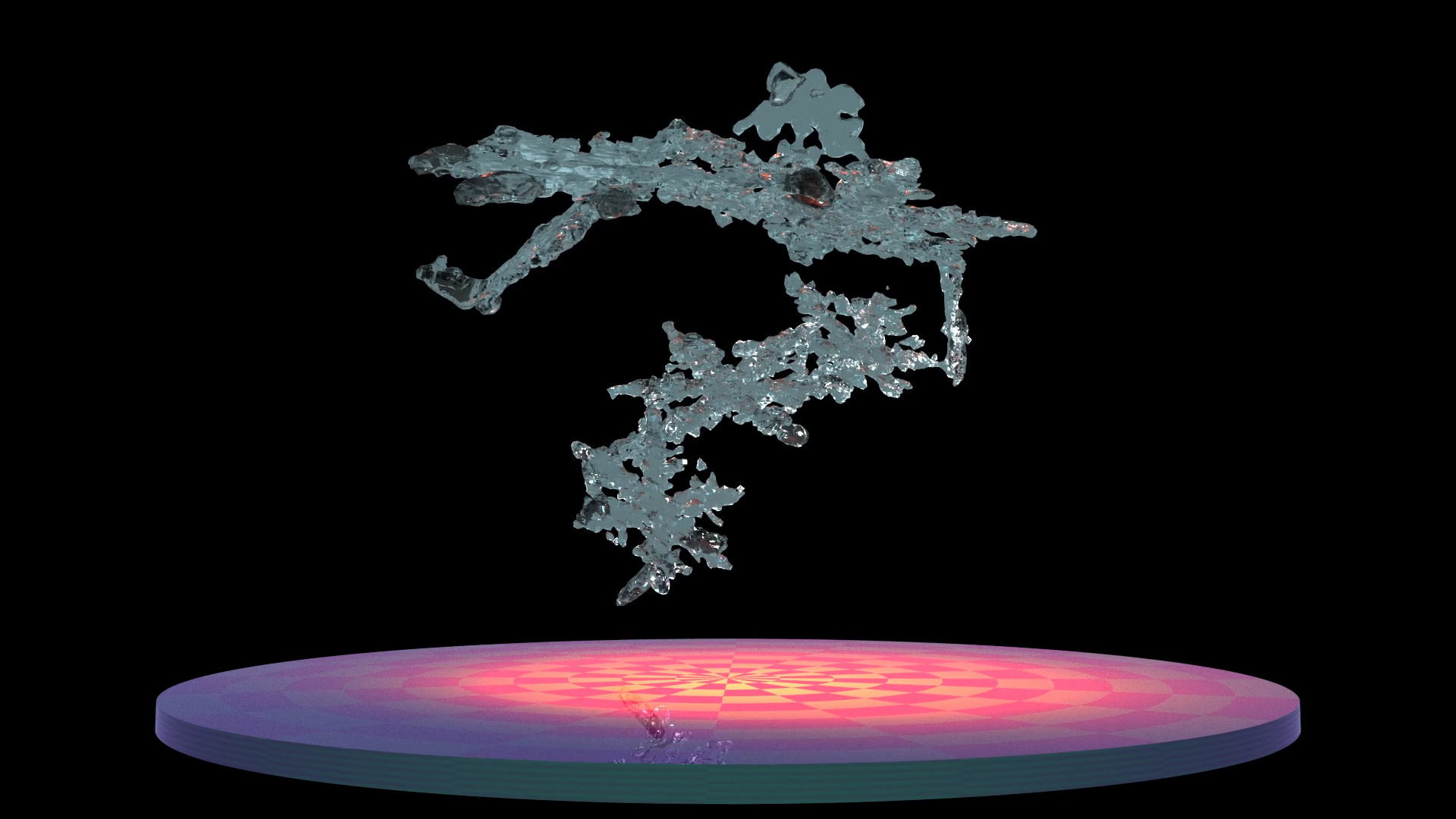Snowflakes Melting Simulation Over Turntable
Clockwise rotating turntable of a cluster of melting snowflakes.
These simulated melting snowflakes were based on a smoothed particle hydrodynamics model. Scientists are interested in understanding the microphysics of such events to help improve remote sensing of melting layer precipitation.

Print resolution image of a snowflake cluster in it's initial fully frozen state.

Print resolution image of snowflakes beginning to show some melting primarily at their tips.

Print resolution image of liquid droplets starting to form across the entire frozen snowflake structure.

Print resolution image of liquid water enveloping most of the frozen structure at this stage.

Print resolution image of almost fully liquid structure now, with only a few remaining small frozen structures remaining.

Print resolution image of fully formed water droplets.
Credits
Please give credit for this item to:
NASA's Scientific Visualization Studio
-
Visualizers
- Alex Kekesi (Global Science and Technology, Inc.)
- Greg Shirah (NASA/GSFC)
-
Scientist
- Jussi Leinonen (JPL)
-
Writer
- Carol Rasmussen (NASA/JPL CalTech)
-
Producers
- Samson K. Reiny (Wyle Information Systems)
- LK Ward (USRA)
-
Animator
- Walt Feimer (KBR Wyle Services, LLC)
-
Technical support
- Laurence Schuler (ADNET Systems, Inc.)
- Ian Jones (ADNET Systems, Inc.)
Release date
This page was originally published on Thursday, March 29, 2018.
This page was last updated on Monday, July 15, 2024 at 12:06 AM EDT.
Papers used in this visualization
Datasets used in this visualization
-
Smoothed Particle Hydrodynamics Model Method
ID: 998
Note: While we identify the data sets used in these visualizations, we do not store any further details, nor the data sets themselves on our site.

